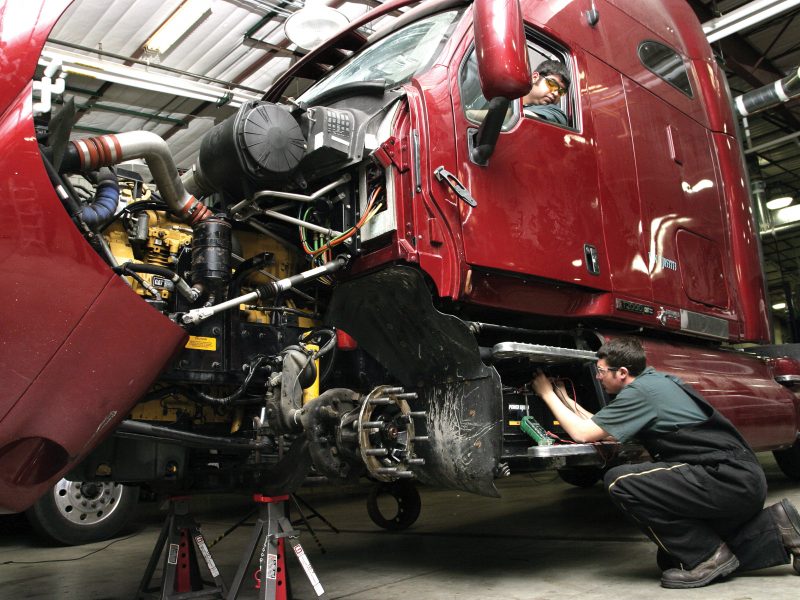Productivity is important to the success of your business. No matter the size of your equipment fleet or the number of technicians on your payroll, you can improve productivity and fleet readiness by considering these five simple tasks.

1. Review your program and include Preventative Maintenance
A thorough maintenance program will help to control costs by capturing the piece of equipment before it breaks down on the job. Some view Preventative Maintenance as a necessary evil, but it’s actually an opportunity to pro-actively control the cost of maintaining equipment, before it controls you.
Tip: Start with your checklist. Your shop techs may or may not follow it tightly but in either case, consider reviewing it often to ensure that it makes the most sense. A good checklist will be comprehensive and will allow your technician to move around the equipment – one time, in an organized fashion and without wasting a lot of steps.
2. Establish a set of clear-cut repair guidelines
Having a clear-cut set of guidelines for repairs insure that every technician knows what to do when they spot a particular issue. For example, if a tech notices a chip in a windshield – your guidelines might state that if the chip is larger than a dime, it should be filled in or the windshield needs to be replaced before it causes a crack. You may consider laminating these guidelines and providing each tech with a copy in a binder. This practice ensures every individual on the shop floor knows the proper procedure without question, regardless of shift or supervisor on the job.
Tip: To get started on a standardized guide, use DOT maintenance criteria as a basis. Repair guidelines will vary from shop to shop, depending on factors such as location. Does your fleet run to Texas? Include things like air conditioning upkeep or the proper type of engine fluids to use.
3. Recruit from tech schools
It’s no secret that industries such as transportation and construction are facing a labor shortage, both on the maintenance shop and equipment operating side. The evident result is that fewer skilled workers, creates more work and less productivity in the shop. To combat the shortage, you need to have a strategy in place for hiring newly trained or career transitional people. Starting a relationship with local technical and trade schools could be one way to get started.
Tip: Attending open houses is a great way to get the attention of potential recruits and educate them on your industry. That could play a big part in influencing graduates to consider your industry as they look toward the future.
4. Hire good attitudes, not just skill
Every shop wants to hire skilled technicians who can diagnose and repair correctly the first time. But perhaps what matters even more is the attitude that your technicians bring to the shop floor. Skills are valuable, but a bad attitude can introduce a negative energy that kills shop productivity. Not to mention, a technician who exhibits a positive attitude is more likely to get along with his/her co-workers and interact well with your customers.
5. Keep a clean and well-organized work space
If your shop has an organization problem, start simple by putting the right resources in place to make it more organized. Suggestions include creating a “visual work space” by hanging tools in a dedicated location on an S/B rack and mark them with an outline or a label. When everything has a place, this sets a tone for organization in your shop and eliminates wasted time.
Another often overlooked responsibility to consider is keeping fluids such as oil, anti-freeze, wiper fluid and Diesel Exhaust Fluid (DEF) stored properly. These type of products should be protected from certain extreme temperatures, as well as dirt, debris, and other contaminants. Improper storage and dispensing of some of these fluids, especially DEF could lead to costly repairs on Selective Catalyst Reduction (SCR) systems. However, product specific storage and dispensing systems are affordable and readily available in the marketplace.
Tip: Keep your shop clean and your automotive fluids safe from contamination by using the correct storage and dispensing system. These proven processes can help eliminate expensive repairs and fleet down time.
In good practice – organization, strategy, and clear guidelines should promote a clean, efficient and safe work environment where there is little room for oversight and more for productivity.
